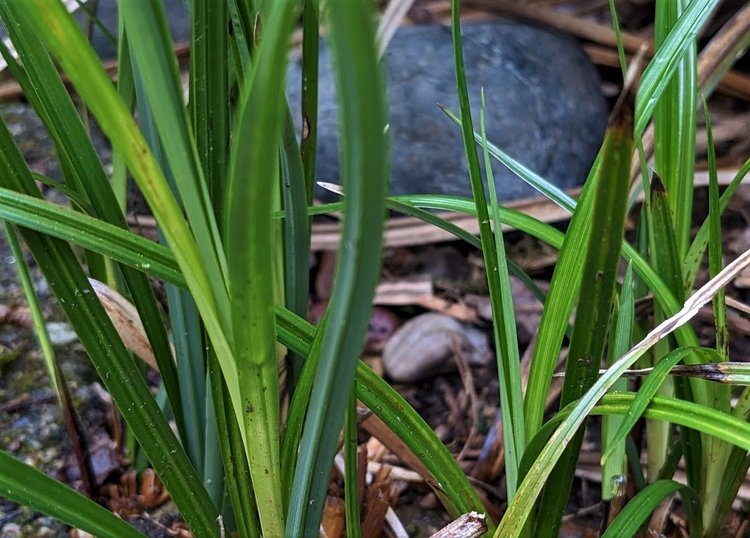 Image 1 of 2
Image 1 of 2

 Image 2 of 2
Image 2 of 2



Carex obnupta (Slough Sedge)
This native evergreen sedge has a lot to offer any home landscape seeking to recreate a pond or streamside setting, or with a rain garden.
Slough sedge is both drought tolerant and tolerant of wet feet in winter, making it ideal for lining the edge of a dry-streambed, seasonal drainage ditch, or as an aggressively spreading primary plant in the bottom of a rain garden, blocking out entry for weeds. In the garden setting it stays much shorter than in a true wetland, rarely extending beyond 24-30 in. tall. However, because it spreads vigorously by rhizome, be mindful that it will spread and give it the space it needs or dig up/divide the new shoots that grow out of bounds every few years.
You can combine it with other tough rhizomatous plants, such as the perennials Douglas Aster and Henderson’s Checker-mallow, which add color spring through fall and can still hold their own mixed with Slough Sedge to prevent weeds from getting a foothold.
Like most sedges, it’s best in full sun, but this sedge is more shade-tolerant than most, so it will also thrive in partial shade. The lovely brown male and female flowers persist over winter, supporting beneficial insects and birds. And mixed with the perennials noted above, which retain interesting winter seedheads, you’ll have year-round color & texture!
This native evergreen sedge has a lot to offer any home landscape seeking to recreate a pond or streamside setting, or with a rain garden.
Slough sedge is both drought tolerant and tolerant of wet feet in winter, making it ideal for lining the edge of a dry-streambed, seasonal drainage ditch, or as an aggressively spreading primary plant in the bottom of a rain garden, blocking out entry for weeds. In the garden setting it stays much shorter than in a true wetland, rarely extending beyond 24-30 in. tall. However, because it spreads vigorously by rhizome, be mindful that it will spread and give it the space it needs or dig up/divide the new shoots that grow out of bounds every few years.
You can combine it with other tough rhizomatous plants, such as the perennials Douglas Aster and Henderson’s Checker-mallow, which add color spring through fall and can still hold their own mixed with Slough Sedge to prevent weeds from getting a foothold.
Like most sedges, it’s best in full sun, but this sedge is more shade-tolerant than most, so it will also thrive in partial shade. The lovely brown male and female flowers persist over winter, supporting beneficial insects and birds. And mixed with the perennials noted above, which retain interesting winter seedheads, you’ll have year-round color & texture!
